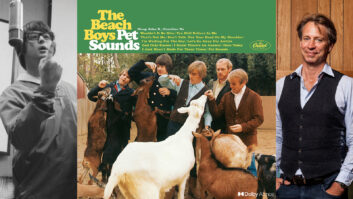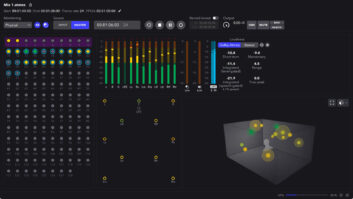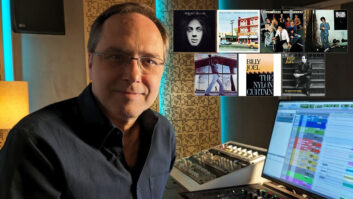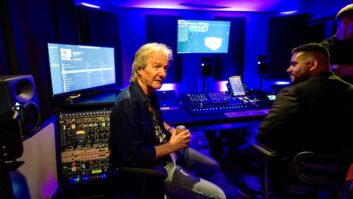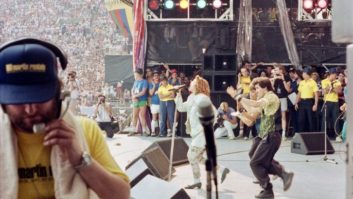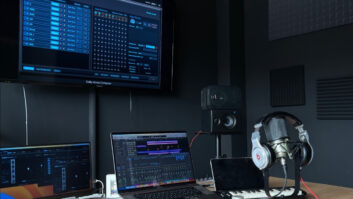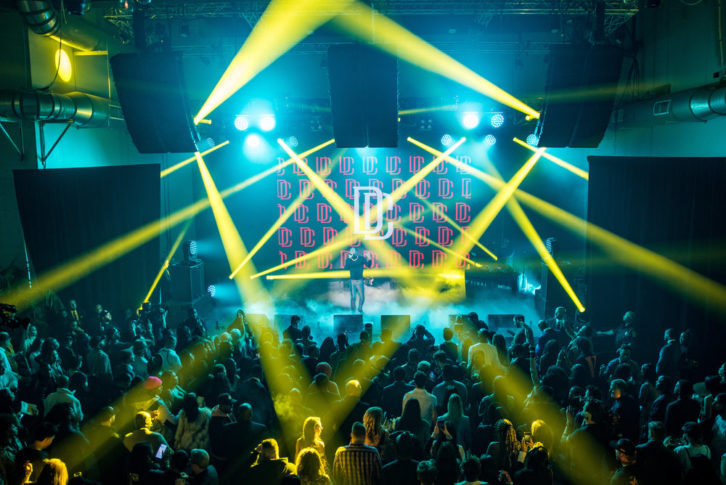
If the launch of Dolby Atmos Music is a movement still in its infancy, then the introduction of Dolby Atmos for Live might be considered still in the womb, but moving around and definitely kicking. It’s the newest addition to the company’s audio ecosystem, joining Cinema, Recording and Broadcast, and to some extent, Gaming and now Streaming.
The exposure of Dolby Atmos for Live has been quieter, for sure, since its public debut four years ago. And in the meantime, a number of live sound companies have emerged with their own immersive systems that are now in action, most notably L-Acoustics’ L-ISA and d&b audiotechnik’s Soundscape, coupled with tools developed by Avid, DiGiCo, Waves and many other established live sound manufacturers.
But behind the scenes Dolby’s research and development into applications for live events and performances has been going on practically since research began on Dolby Atmos for the Cinema market a decade ago. Cinema then took off in 2012, TV in 2017, and Music and Recording is just now emerging. Atmos Live debuted in 2016 with a launch at London nightclub Ministry of Sound.

“That was a fixed install, and it was more of a proof of concept in a very particular content genre, where it was really focused on EDM and DJ playback,” says Jed Harmsen, VP of Cinema & Content Solutions, who for the past five years has been involved with the launch of Dolby Atmos for Cinema and now looks to slowly introduce the creative possibilities and varied applications to the live sound market. “The idea behind Dolby Atmos for Live stems from an annual company-wide innovation festival we call IdeaQuest, where Dolby employees across the world spend a week brainstorming our next innovations.
“But what it did is it gave us a high degree of confidence and conviction—based on the creative feedback we got—that there’s definitely a value to this experience,” Harmsen continues. “That’s both at the consumer level based on exit polling we did, as well as from artists like Deadmau5 and others who really enjoyed working with the technology. And so that enabled us to say, ‘Okay, let’s think a little more broadly about this and how we can make this more applicable to multiple genres within music, as well as other forms of entertainment.’ How do we make this more adaptable so it’s not only for nightclubs, but also for performing arts centers and for residency venues and, over time, to the tens of thousands of people at general live venues.”
A similar nightclub, Sound-Bar, opened in Chicago a year later, in mid-2017, followed by a year and a half of development into applications and tools for other types of venues. Throughout 2018 and into 2019, Dolby began experimenting within its labs at its HQ in San Francisco to see how it could apply these learnings to larger venues and more diverse content genres. Then in November of 2019, Dolby, in partnership with Dick Clark Productions, made a big splash at the AMA show held at the Microsoft Theatre in Los Angeles, with performances by Lizzo, Post Malone and Dua Lipa in Atmos and the rest in stereo.
“That was actually our first, I’ll call it, major public unveiling,” Harmsen says. “We actually designed and integrated the overall solution, working with the collective sound design team, the front-of-house mixers and the artists. We had three main criteria: One, that we could deliver the Dolby Atmos goods when we needed to; two, that we could pass through the traditional stereo playback for acts that weren’t in Dolby Atmos; and then third, provide a fail-safe option to fall back to stereo if there was a problem.” There wasn’t.
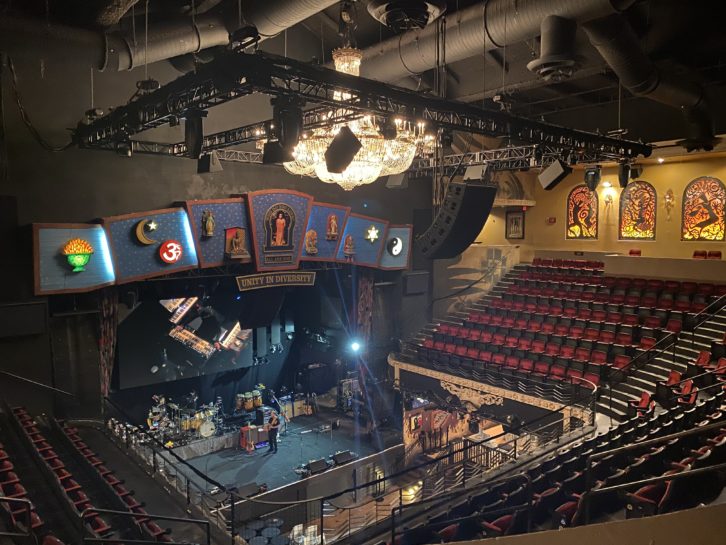
A few months later, a system was installed in partnership with Live Nation at the House of Blues in Mandalay Bay, Las Vegas, for the now nine-years-running Carlos Santana residency to begin in January 2020. [Unfortunately, the residency been put on hold after a handful of performances. It will be back.] In late January 2020, during Grammy Week, Meek Mill performed a full Atmos for Live show to an industry audience at NeueHouse Hollywood, presented by Dolby and Tidal, which also has partnered with Atmos Music.
Those types of partnerships have become increasingly important as the Atmos technology spreads across the various professional audio markets, perhaps even more so in live sound. Unlike film, television, broadcast and music, the creative talent and established production companies don’t have a lot of precedents for working in a surround-type format. For Dolby, providing education and developing simplified, powerful toolsets are the order of the day.
“I think the educational component is huge,” Harmsen says. “It’s a fundamental change, so the educational process is not only about how the tools can be used or how we envision them being used, but more so trying to give the creative teams a broader palette and an easy-to-use toolset so that you can be as ambitious or as conservative as you choose to be. And what we’re finding is that people are actually choosing to do both, even on a song-by-song basis.”
And Dolby freely admits that while they’ve had some early successes, all the tools aren’t yet there. The strategy now is on further developing a feedback loop with the creative teams at all types of venues, from performance halls to event centers to, someday soon no doubt, Broadway and eventually touring—once the pandemic ends, anyplace where people gather in small, medium and large groups to enjoy music.
“Our goal is to find these spaces where the creators can use the palette and get creative,” Harmsen concludes. “And we’re going to do the work to marshal everyone through the process and the educational curve, and hopefully come out with a completely reinvigorated way to hear music.”
